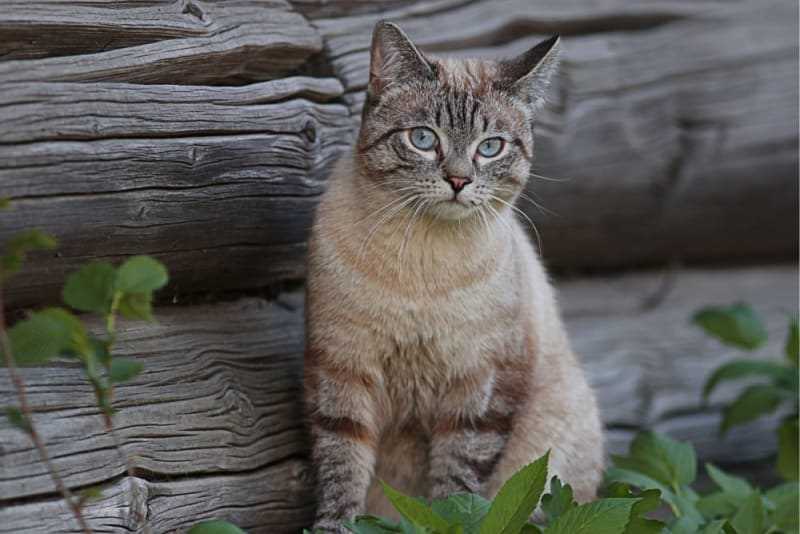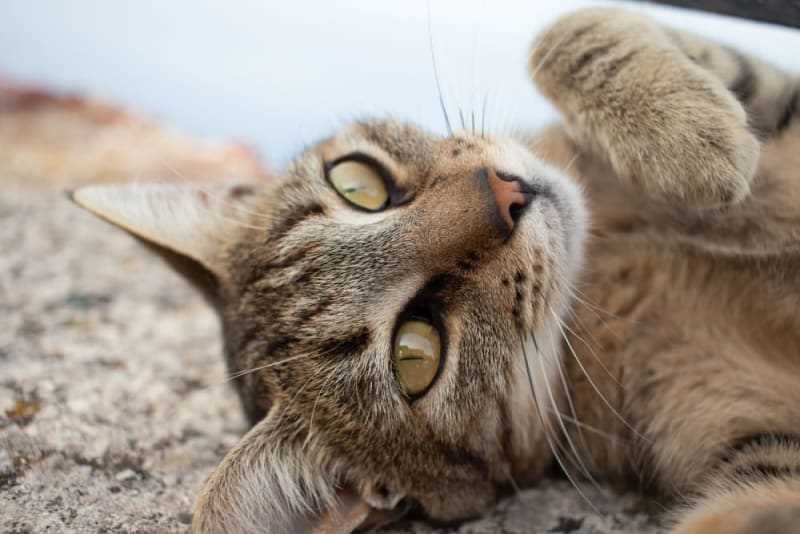If you notice unusual behavior, such as aggression or extreme agitation, it’s critical to act swiftly. A feline exhibiting sudden changes in temperament might be showing signs of distress that could indicate a serious health issue. Keep an eye out for excessive vocalization or difficulty in swallowing, as these symptoms can be telling.
Another warning sign includes excessive drooling or foaming at the mouth. This might seem alarming, but it’s important to remain calm. Observe for any paralysis or weakness, particularly around the hind legs. These physical changes can signify that something is seriously wrong.
Pay attention to how your companion interacts with others. A once-friendly creature might suddenly become withdrawn or overly aggressive. Any unusual bite or scratch from an unknown source should raise immediate concerns. If you suspect exposure to wildlife, it’s wise to consult a veterinarian without delay.
Regular check-ups and vaccinations are paramount for all pets. Keeping up with vaccinations can prevent many diseases, including those that can lead to severe symptoms. Always trust your instincts; if something feels off, it’s better to seek professional help sooner rather than later.
Identifying Behavioral Changes in Your Feline Companion
Notice any sudden shifts in activity levels or temperament. A once playful and sociable friend might become withdrawn or overly aggressive. Keep an eye out for unusual hiding spots or avoidance of interaction.
Monitor for signs of anxiety. If a normally calm and relaxed pet starts displaying excessive vocalization, pacing, or restlessness, it could indicate distress. These behaviors may signal something is wrong.
Changes in grooming habits can be telling. If a beloved companion stops grooming or shows signs of over-grooming, it might reflect underlying health issues, including neurological problems.
Watch for fluctuations in appetite or drinking habits. A sudden decrease in food or water intake can be concerning and warrants attention. For those struggling with vomiting, consider exploring the best cat food for cats who throw up.
Finally, observe interactions with humans and other pets. Aggression towards familiar faces or a complete withdrawal from social situations can indicate significant changes in mental state.
Recognizing Physical Symptoms of Rabies
Notice any unusual physical changes? A few signs may suggest something is wrong. Look for uncharacteristic behavior like excessive drooling or difficulty swallowing. These symptoms often indicate distress in the throat area. If the feline is unable to drink water due to throat spasms, dehydration can set in quickly.
Changes in Mobility

Watch for issues with coordination. If the furry friend stumbles or has trouble walking, it might be a red flag. Understand that rabies can affect the nervous system, leading to muscle weakness or paralysis. A lack of balance should never be ignored.
Unusual Grooming Habits

Observe the grooming routine. A sudden lack of grooming or excessive grooming in specific areas can signal discomfort or anxiety. If the fur appears unkempt or matted, this might indicate a physical issue, potentially linked to a serious condition. Keep an eye on the overall appearance; any drastic changes require attention.
For information on related topics, check out how long after neutering cat is testosterone gone.
If you notice unusual behavior, such as aggression or extreme agitation, it’s critical to act swiftly. A feline exhibiting sudden changes in temperament might be showing signs of distress that could indicate a serious health issue. Keep an eye out for excessive vocalization or difficulty in swallowing, as these symptoms can be telling.
Another warning sign includes excessive drooling or foaming at the mouth. This might seem alarming, but it’s important to remain calm. Observe for any paralysis or weakness, particularly around the hind legs. These physical changes can signify that something is seriously wrong.
Pay attention to how your companion interacts with others. A once-friendly creature might suddenly become withdrawn or overly aggressive. Any unusual bite or scratch from an unknown source should raise immediate concerns. If you suspect exposure to wildlife, it’s wise to consult a veterinarian without delay.
Regular check-ups and vaccinations are paramount for all pets. Keeping up with vaccinations can prevent many diseases, including those that can lead to severe symptoms. Always trust your instincts; if something feels off, it’s better to seek professional help sooner rather than later.
Identifying Behavioral Changes in Your Feline Companion
Notice any sudden shifts in activity levels or temperament. A once playful and sociable friend might become withdrawn or overly aggressive. Keep an eye out for unusual hiding spots or avoidance of interaction.
Monitor for signs of anxiety. If a normally calm and relaxed pet starts displaying excessive vocalization, pacing, or restlessness, it could indicate distress. These behaviors may signal something is wrong.
Changes in grooming habits can be telling. If a beloved companion stops grooming or shows signs of over-grooming, it might reflect underlying health issues, including neurological problems.
Watch for fluctuations in appetite or drinking habits. A sudden decrease in food or water intake can be concerning and warrants attention. For those struggling with vomiting, consider exploring the best cat food for cats who throw up.
Finally, observe interactions with humans and other pets. Aggression towards familiar faces or a complete withdrawal from social situations can indicate significant changes in mental state.
Recognizing Physical Symptoms of Rabies
Notice any unusual physical changes? A few signs may suggest something is wrong. Look for uncharacteristic behavior like excessive drooling or difficulty swallowing. These symptoms often indicate distress in the throat area. If the feline is unable to drink water due to throat spasms, dehydration can set in quickly.
Changes in Mobility

Watch for issues with coordination. If the furry friend stumbles or has trouble walking, it might be a red flag. Understand that rabies can affect the nervous system, leading to muscle weakness or paralysis. A lack of balance should never be ignored.
Unusual Grooming Habits

Observe the grooming routine. A sudden lack of grooming or excessive grooming in specific areas can signal discomfort or anxiety. If the fur appears unkempt or matted, this might indicate a physical issue, potentially linked to a serious condition. Keep an eye on the overall appearance; any drastic changes require attention.
For information on related topics, check out how long after neutering cat is testosterone gone.
If you notice unusual behavior, such as aggression or extreme agitation, it’s critical to act swiftly. A feline exhibiting sudden changes in temperament might be showing signs of distress that could indicate a serious health issue. Keep an eye out for excessive vocalization or difficulty in swallowing, as these symptoms can be telling.
Another warning sign includes excessive drooling or foaming at the mouth. This might seem alarming, but it’s important to remain calm. Observe for any paralysis or weakness, particularly around the hind legs. These physical changes can signify that something is seriously wrong.
Pay attention to how your companion interacts with others. A once-friendly creature might suddenly become withdrawn or overly aggressive. Any unusual bite or scratch from an unknown source should raise immediate concerns. If you suspect exposure to wildlife, it’s wise to consult a veterinarian without delay.
Regular check-ups and vaccinations are paramount for all pets. Keeping up with vaccinations can prevent many diseases, including those that can lead to severe symptoms. Always trust your instincts; if something feels off, it’s better to seek professional help sooner rather than later.
Identifying Behavioral Changes in Your Feline Companion
Notice any sudden shifts in activity levels or temperament. A once playful and sociable friend might become withdrawn or overly aggressive. Keep an eye out for unusual hiding spots or avoidance of interaction.
Monitor for signs of anxiety. If a normally calm and relaxed pet starts displaying excessive vocalization, pacing, or restlessness, it could indicate distress. These behaviors may signal something is wrong.
Changes in grooming habits can be telling. If a beloved companion stops grooming or shows signs of over-grooming, it might reflect underlying health issues, including neurological problems.
Watch for fluctuations in appetite or drinking habits. A sudden decrease in food or water intake can be concerning and warrants attention. For those struggling with vomiting, consider exploring the best cat food for cats who throw up.
Finally, observe interactions with humans and other pets. Aggression towards familiar faces or a complete withdrawal from social situations can indicate significant changes in mental state.
Recognizing Physical Symptoms of Rabies
Notice any unusual physical changes? A few signs may suggest something is wrong. Look for uncharacteristic behavior like excessive drooling or difficulty swallowing. These symptoms often indicate distress in the throat area. If the feline is unable to drink water due to throat spasms, dehydration can set in quickly.
Changes in Mobility

Watch for issues with coordination. If the furry friend stumbles or has trouble walking, it might be a red flag. Understand that rabies can affect the nervous system, leading to muscle weakness or paralysis. A lack of balance should never be ignored.
Unusual Grooming Habits

Observe the grooming routine. A sudden lack of grooming or excessive grooming in specific areas can signal discomfort or anxiety. If the fur appears unkempt or matted, this might indicate a physical issue, potentially linked to a serious condition. Keep an eye on the overall appearance; any drastic changes require attention.
For information on related topics, check out how long after neutering cat is testosterone gone.







